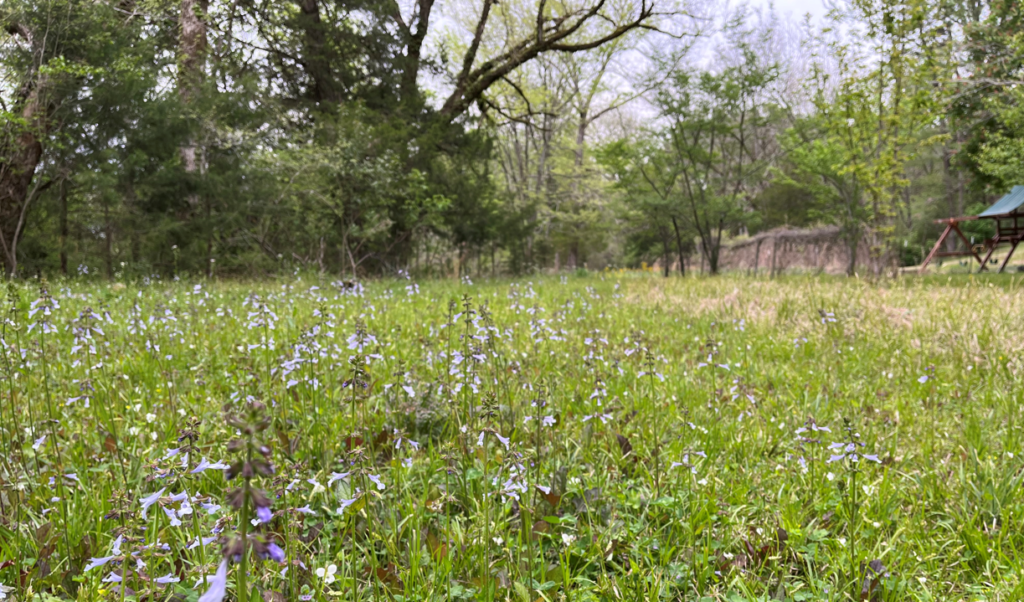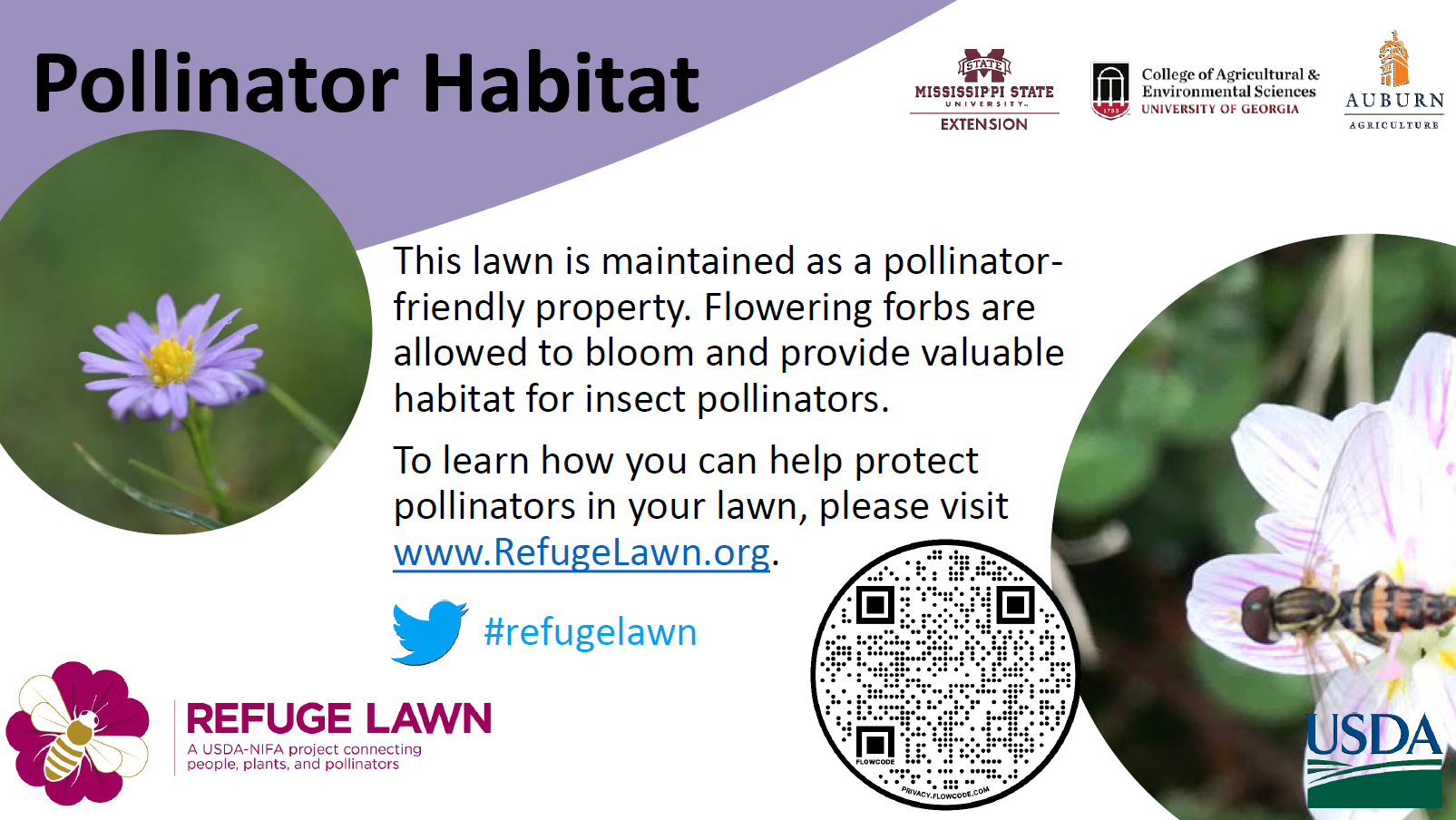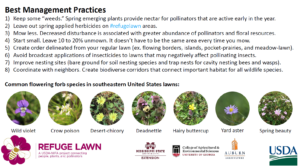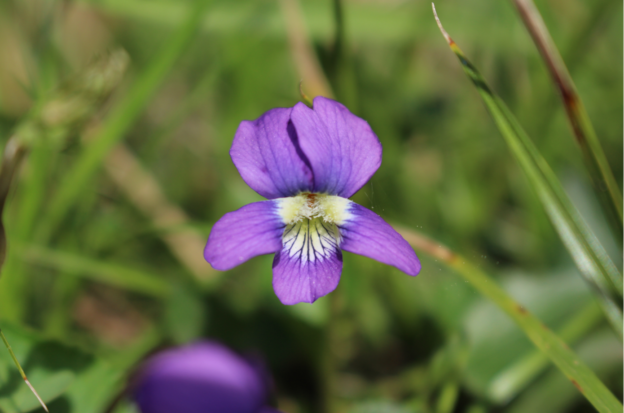By refugelawn, on 04/13/2022
Transforming our urban and suburban surroundings to better accommodate pollinating insects starts at the grass-roots level (no pun intended). I had the pleasure of hearing Dr. Doug Tallamy speak recently. His principle objectives for landscapes are to:
- Support the food web
- Sequester carbon
- Manage the watershed
- Support pollinators
Doug’s books give credence to the notion that we should “Start Small” if we want to have a truly large impact. 
Lyreleaf sage (Salvia lyrata) in my own back-yard Refuge Lawn.
Another frequent contributor to this conversation is our very own Mississippi garden philosopher, Felder Rushing. I have enjoyed his blog about Meadow Lawn. He’s even on our project advisory committee.
We can all do our part to improve local landscapes. Start small in your own lawn.
- Keep some “weeds.” Spring emerging plants provide nectar for pollinators that are active early in the year.
- Leave out spring applied herbicides on Refuge Lawn areas. This doesn’t have to be your whole yard – pick areas that are low use and be intentional. Create a nice curved line with a mown or mulched border.
- Mow less. Decreased disturbance is associated with greater abundance of pollinators and floral resources. Most lawns can be mown taller and fair just fine. Mowing taller means mowing less often. Remember to mow only 1/3rd of turfgrass height at a time – the “1/3rd rule.”
- Start small. Leave 10 to 20% unmown. It doesn’t have to be the same area every time you mow.
- Create order delineated from your regular lawn (ex. flowing borders, islands, pocket-prairies, and meadow-lawn).
- Avoid broadcast applications of insecticides to lawns that may negatively affect pollinating insects.
- Improve nesting sites (bare ground for soil nesting species and trap nests for cavity nesting bees and wasps). Leave some fallen debris and leaf material – that’s where the critters live.
- Coordinate with neighbors. Create biodiverse corridors that connect important habitat for all wildlife species. You can still have a fantastic looking, manicured lawn right next to your Refuge Lawn.
Our yard signage has been a big hit – we don’t sell these but give them out when we can. You can download and print your own. Download the full 13×24 inch yard signs here.


